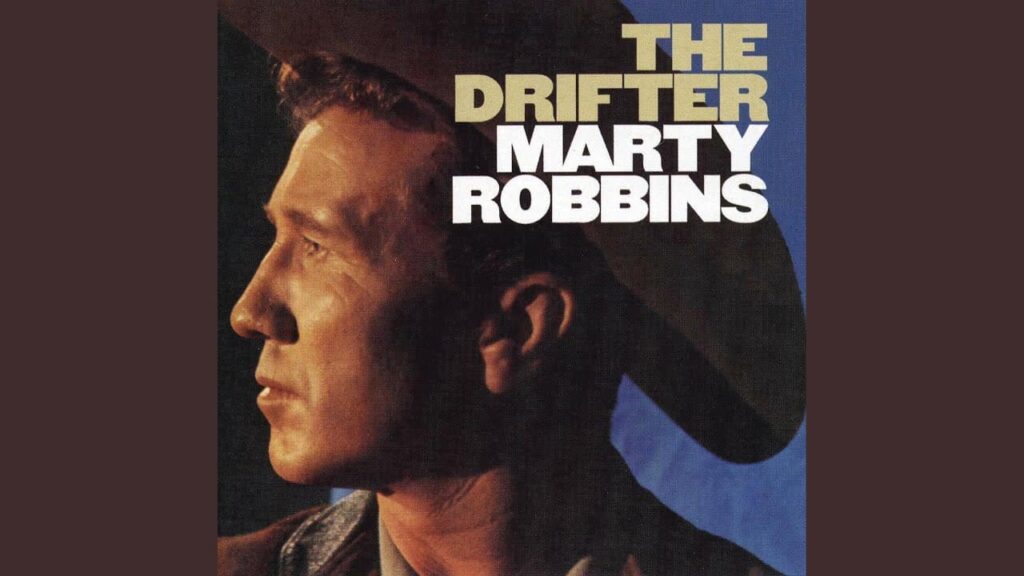
The Swift and Somber Lesson of Ambition in the Old West
For many of us who remember the golden age of Western ballads, the name Marty Robbins evokes a particular blend of storytelling, melody, and the dusty mystique of the American frontier. He was a troubadour of the cowboy, a chronicler of gunfights and lonely trails, and his voice held a captivating power that could transport you directly into the heart of a saloon standoff or a vast, silent desert. Among his lesser-known, yet equally impactful, narratives is “The Fastest Gun Around,” a poignant and swift tale of youthful hubris and its fatal consequences.
This evocative track, found on his 1963 album Return of the Gunfighter, didn’t achieve the crossover chart dominance of his signature hit “El Paso,” which famously topped both country and pop charts in 1960. However, the album itself made a strong showing. When Billboard established its country album chart in early 1964, Return of the Gunfighter was already a presence, charting at No. 8 and remaining on the list for a respectable twelve weeks. While “The Fastest Gun Around” wasn’t released as a standalone single to hit the charts, its inclusion on such a well-received album cemented its place in Robbins’ storied discography and in the hearts of fans who appreciated his deep dives into Western lore.
The story woven into “The Fastest Gun Around” is a classic Western trope, yet delivered with a chilling directness that only Marty Robbins could muster. It tells of a brash, seventeen-year-old cowboy named Joey Steel, consumed by the desire to prove himself the quickest draw in the West. His target? None other than the legendary William Bonney, better known as Billy the Kid, who has ridden into town. Joey, blinded by ambition and the craving for a reputation, believes that taking down the Kid will instantly elevate him to the pinnacle of gunfighter fame. He’s young, boasts a “lightning hand,” and is convinced it’s his moment to become a man. The encounter is swift and brutal; as Joey reaches for his gun, Billy the Kid’s weapon already smokes. The bullet finds its mark, and Joey’s wasted life flashes before his eyes in that final, fatal draw. The song ends with Billy the Kid, no stranger to such encounters, feeling the weight of another life taken, riding out of town, left to wonder how long he himself will remain “the fastest gun around.”
The meaning behind this concise yet powerful ballad is timeless: the perils of unchecked ambition and the harsh realities of a violent life. It’s a somber lesson that fame, particularly born of violence, often comes at a steep price, if not outright death. For an older generation, this song resonates with a nostalgic echo of a time when stories of the Old West captured imaginations, but also served as parables about life’s unforgiving nature. There’s a particular melancholy in the fleeting nature of Joey’s dream, a stark reminder that youth and arrogance are no match for experience and grim necessity.
What truly distinguishes Marty Robbins‘ portrayal in “The Fastest Gun Around” is the unvarnished authenticity he brings to it. There’s no glamorizing of the gunfight; it’s quick, decisive, and tragic. Robbins’ delivery, always imbued with a deep understanding of his material, perfectly captures the fateful encounter. His voice, often smooth and melodic, takes on a slightly hardened edge here, conveying the grim reality of the Western code. The sparse arrangement, with its deliberate guitar work, allows the narrative to unfold unimpeded, painting vivid mental pictures of dusty main streets and the cold glint of steel. For many of us, Robbins wasn’t just singing songs; he was weaving tapestries of history and legend, each thread a character, a challenge, a consequence. “The Fastest Gun Around” remains a stark, unforgettable snippet of that rich Western tapestry, a poignant whisper from a bygone era that still carries its potent message today.